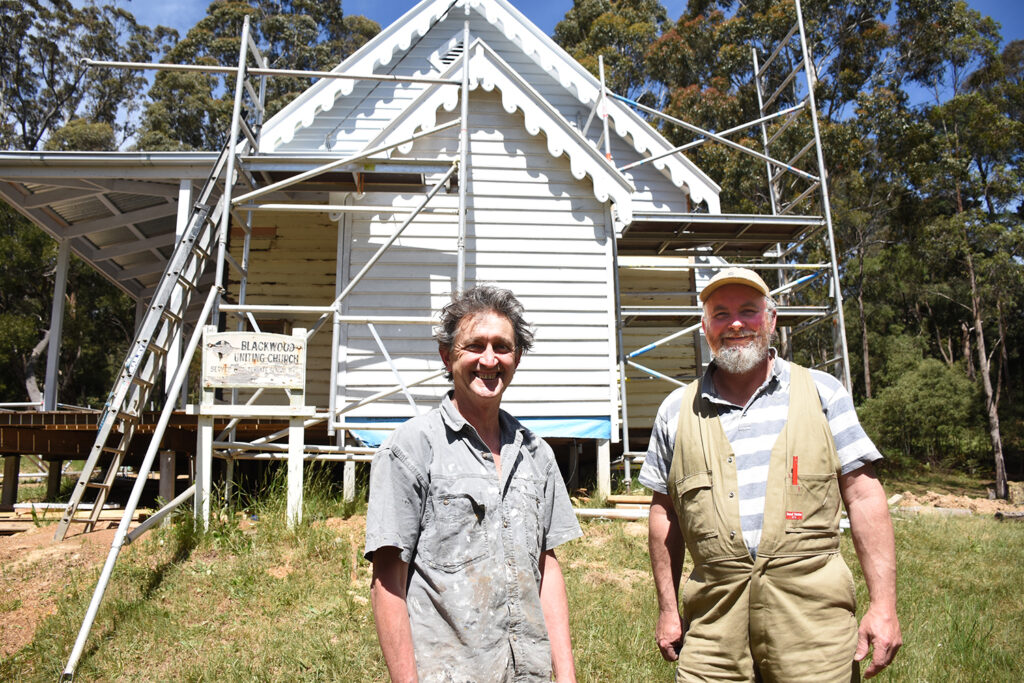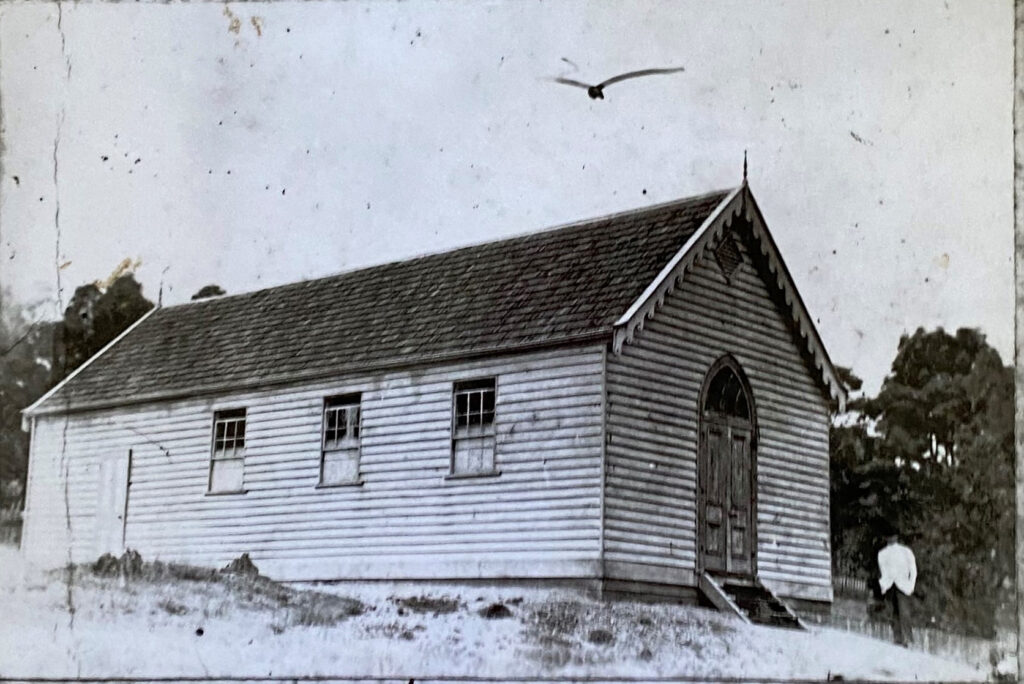November 23rd, 2020A bell helps give new life to a Blackwood
A bell found in the 130-year-old Uniting Church is from the same foundry that made London’s Big Ben. Dated 1854, the Blackwood bell has been silent for about 30 years. It carries the name of J.Warner & Sons, a firm that made over 2200 bells over its 135-year history until 1921.
There is unlikely to be any written history of these bells, however, for all records were destroyed by German bombing of London during the World War II.
Two people who can scarcely contain their delight at the discovery are working on the restoration of the church, which will also become a community centre.

Restorer and acclaimed bluegrass musician Nick Dear and his offsider-cum-painter Brendan Hehir both remember their children ringing the bell at Sunday School about 30 years ago.
But it remained hidden until 63-year-old Brendan crawled up and filmed it with his phone. There’s no trapdoor so a hole was cut in the roof. “By the time I got down the ladder Nick had found that Warner’s foundry had started in 1790 and forged Big Ben.”
The bell sits in a recess in the roof cavity and Nick reckons it has remained unseen over the 130 years. “We knew it was up there because a sash cord hung down, but it broke about 30 years ago.”
He began restoration work three years ago. “It’s become like the Sydney Opera House,” he says of progress, speculating that it could be finished by Christmas.
The former Methodist Church had to be restumped. The tea room, which had been added, was “on its way down the hill”, so it’s given way to a tiled bathroom, including access for people with a disability.

There’s double-glazing on windows that also cunningly tilt open to allow air flow.
Nick is making what look like remarkable doors, their panels from ancient submerged Tasmanian timber. The finished product will be of Tasmanian oak and Victorian ash.
The architraves have been made in Victorian style with two detailed panels, jokingly called frilly knickers.
Nick refashioned a couple of bed-ends for the finials, the decorative top-knobs.
There’s an eye on quality, he says, mentioning the new floorboards of Baltic pine, 100mm boards instead of the usual 140mm, and found at a company in Werribee.
Nick milled the joists and verandah timber.
He won’t disclose the cost (the budget is “slim”) but says the church is paying, with some help from Moorabool Shire.
When it’s finished the church will sit on a town square, which will run down to the nearby pub. There are plans for a rotunda for big shows and the square will be home to markets, fetes, art shows and music. When I mention this in the pub later, the delight is almost overwhelming.
For a town of 350-360, which doubles at weekends, this is shaping up like a real community hub, with talk of weddings at the church, which was first renovated by a working bee. The Uniting Church apparently used money from the sale of other disused churches to pay for some of the restoration.
Blackwood has something of a reputation as a home for a remarkable number of talented musicians, so Nick is clearly looking forward to some gigs. He tells of “shape note” singing, an old English style for those who can’t read music or even sing.
The conductor stands in the middle of the singers who are grouped in ranges. “It’s easy to follow, with shapes on the page instead of notes. Within minutes, you’re full tilt. You bellow it out. We’ll do it again.”
And for the musically minded, the bell’s note is F Sharp, although as Nick explains, back when it was made, this note was closest to G. And seeing he hasn’t heard the bell ring in 30 years, he’s looking forward to that grand day.
Words: Kevin Childs | Images: Kyle Barnes & contributed










